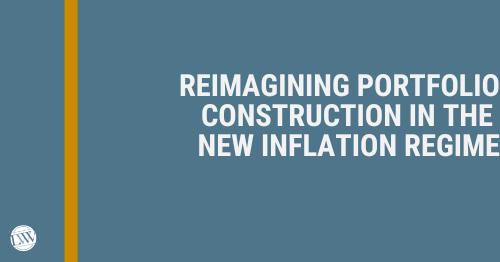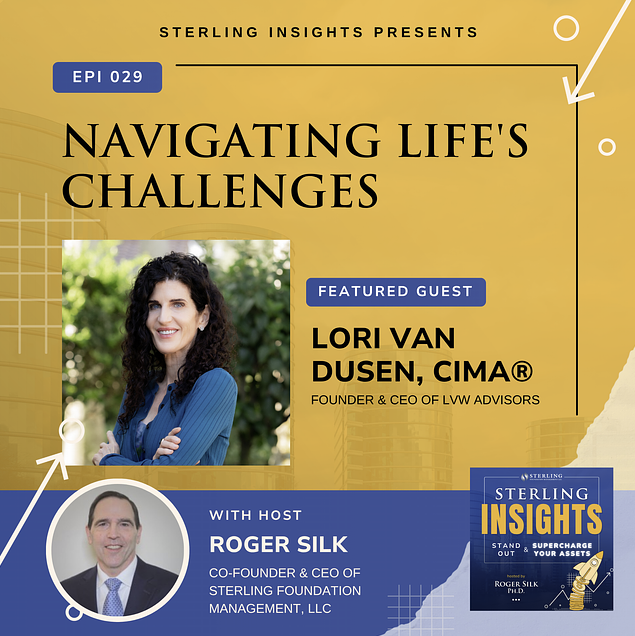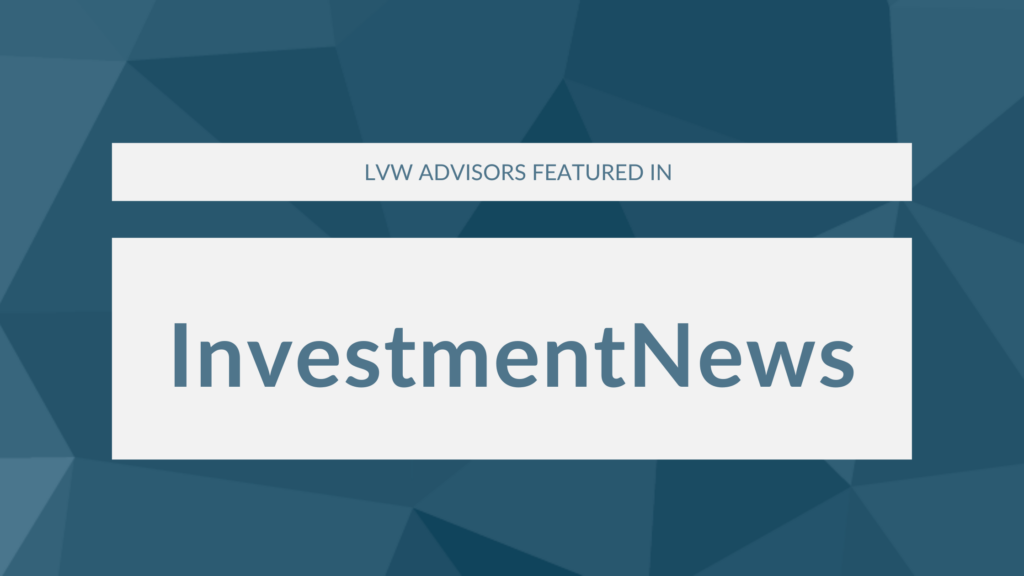By: Joseph Zappia, Co-Chief Investment Officer, LVW Advisors, LLC
Summary:
The current correction in financial assets is uniquely challenging as things that have worked over the last 40 years are no longer working. Since the early 1980s, interest rates have trended generally lower, making bonds — the safe part of investors’ portfolios — a good hedge against equity markets and volatility. During this period of generally declining rates, stocks and bonds have been negatively correlated. Suddenly, three key mantras are being challenged – the passive 60/40 (60% equity/40% bond) portfolio, buy and hold, and buy the dip – all because of a paradigm shift from low to high inflation.
Background:
More recently, we were still dealing with the aftermath of the 2008 Great Financial Crisis (GFC). Policy makers succeeded in transferring massive amounts of debt from corporate and personal balance sheets to government balance sheets. This was accomplished through various means of providing liquidity to the financial system, including quantitative easing, extremely low interest rates, and low inflation. The actions of policy makers over the past 14 years demonstrated how to effectively fight deflationary forces. This was possible due to rates being low and inflation kept in-check. But things changed during the COVID lockdown in 2020, with policy makers printing so much money, they effectively replaced the entire economic output of the US economy that spring. This was then capped off with what Ray Dalio calls “helicopter money.” Stimulus checks were sent directly from the government into the hands of American businesses and families through various stimulus programs. This worked incredibly well at the time. The result was unprecedented demand through growth of the money supply without any increase in economic supply. This was the beginning of a new inflation regime, unleashing the worst inflation in decades.
So, what’s the current status?
Policy makers now need to fight inflation, which is proving to be very damaging to the economy – and they need to do so having less flexibility. Today is the mirror image of the situation in 2008 – conditions are tight, demand exceeds supply, inflation is higher, and government balance sheets are bloated. Geo-political turmoil is pressuring supply chains, making matters worse.
This toxic combination of the Fed reducing the size of its balance sheet and increasing interest rates, during a period of the highest inflation in decades, is bad news for investors who have relied on the buy and hold, buy the dip, and the 60/40 portfolio mantras of investing. The Fed has been clear in that it is more concerned with breaking the inflationary spiral than with propping up financial assets.
Greg Jensen, Co-Chief Investment Officer and head of the Investment Engine at Bridgewater Associates LLC, speaking in a recent podcast said:
“They (The Fed) want the asset prices to fall to a certain degree. And even if they fall more than they want them to, they’re weighing the inflation picture against that. So all of a sudden you’ve got a much bigger dip possibility before you get relief from policy makers,” Jensen said. “And in fact, the dip has to become disinflationary in order to do that.”
Jensen estimates that roughly 40% of the US equity market “can only survive essentially with new buyers entering the market because they’re not cash flow generating themselves. And that’s near a historic high, that’s like basically right in line with ‘99, 2000.”
As more liquidity gets sucked out from the market, assets that have seen their valuations rise as a result of investor inflows rather than cash flows, are now vulnerable.
“The assets that need liquidity the most, that don’t themselves have cash flows are getting killed because liquidity is being withdrawn from the aggregate system and those assets that require kind of Ponzi-like ongoing purchases to support the assets, are getting hit the hardest,” he said.
As money is sucked from the financial system, what has worked in the recent past will not work anymore and investors need to rethink and adjust their portfolios to get to acceptable returns.
For the most part a balanced portfolio works well in diversifying risk and providing a more stable return, at least until there is a fundamental change in inflation and monetary policy as we are witnessing today. The 60/40 passive portfolio is designed to provide stability by combining non-correlated investments. Under the new regime, this portfolio could disappoint investors.
Here’s how portfolios can be restructured to prevent further harm. For investors with a long term view, “buy the dip” still makes sense. But for older investors, “sell the rip” might make more sense. Conventional thinking was why not “buy the dips” since the market would outperform other assets since the United States Federal Reserve would put a floor on asset prices. This kind of thinking works in a period of low interest rates and inflation but will not work with structurally higher rates and stubborn and elevated inflation.
No one asked what would happen if interest rates had to push higher due to persistent inflation, nor did they ask what the impact on companies without earnings or with low levels of cash flow would be. To highlight the insanity, consider this example:
Zoom Video Communications was worth more than Exxon Mobil stock in October 2020. Seems obvious right? The world was going through a structural shift from traditional assets toward new world technology. Hydrocarbon stocks were “uninvestable.” Today, Zoom is worth 1/10 of Exxon. It all seems so obvious now, but it was not back then. At this same time, the energy sector as a percentage of S&P 500 was less than 3%, yet global oil demand was increasing, energy companies were hit with regulations due to political pressure, creating roadblocks to increasing supply. More demand with less supply leads to higher prices. Since March 2020, energy has been the best performing sector in the S&P 500, and the only positive sector in the index year-to-date. Yet as of early June, even after the huge move up in energy stocks, the entire energy sector combined has a smaller combined market capitalization than Apple stock – 4.8% versus Apple’s 6.5%!
A passive “buy and hold” is a strategy that has withstood the test of time: the longer one stays invested, the greater the probability of an overall loss falls to near zero. However, that does not mean that “buy and hold” always works. There have been several “lost decades” for the S&P 500. This is the primary problem with benchmarking to a certain index or country, since one will naturally gravitate toward whichever segment of the global market that is outperforming – ignoring valuation and under-valued or under-represented sectors.
Instead, taking a balanced approach and being open to investing in certain areas or regions that benefit from higher interest rates and inflation could be very beneficial. One example might be reducing exposure to US stocks in favor of non-US stocks, specifically in countries that produce commodities in short supply across the globe. Another example is owning dividend growth companies that have strong cash flows and a competitive moat or advantage to survive any prolonged downturn, such as utilities, energy, and real assets (like railroads and investment real estate).
It is a period to stop being anchored to only owning the S&P 500 and expecting the S&P 500 to outperform most active managers. Skilled active managers will be able to identify companies that have a competitive advantage in this new environment. While the 60/40 passive approach has worked for 35 years as interest rates have moved lower, and in some cases, negative, now inflation is forcing central bankers to raise interest rates. However, both bond and equity market participants continue to factor in severely moderated inflation expectations along with lower interest-rate hikes. Therefore, there is more downside risk ahead, especially in long-duration bonds and equities.
There are additional risk management tools that can be deployed. In fixed income, we prefer inflation-protected bonds over nominal bonds, credit over duration, and idiosyncratic strategies such as direct lending and direct ownership in income-producing private real estate. Also, investors should be open to consider alternative investments, such as hedged equity, multi-strategy, real estate, and commodities – perhaps even tactical asset allocation strategies that are driven trend following or top-down macro driven events can help you figure out where to go next. The point here is there’s no need to be in a hurry.
Conclusion:
If your portfolio is getting hammered in this volatile environment and you are a mostly passive “60/40” investor, it is not the time to sit tight and expect it will all work out or worse, keep buying the dip. Instead, it’s time to think differently and consider introducing true-diversifying strategies that will rebalance your portfolio to repair the damage while repositioning for the eventual recovery.
Source:
- Odd Lots Podcast, Bloomberg May 23, 2022
- Bloomberg terminal for data
This information is provided by LVW Advisors for general information and educational purposes based upon publicly available information from sources believed to be reliable. It is not intended to serve as a substitute for personalized investment advice or as a recommendation or solicitation of any particular security, strategy or investment product. Opinions expressed herein are based on economic and market conditions at the time this material was written. Actual economic or market events may turn out differently than anticipated. The information in these materials may change at any time and without notice. Past performance is not a guarantee of future returns.









